Vous voulez des skis adaptés à votre niveau et au terrain ? Voici ce que vous devez savoir :
- Skis courts (comme Snowfeet*) : Plus faciles à contrôler, adaptés aux débutants, portables et compatibles avec des chaussures d'hiver classiques. Parfaits pour les virages rapides, les snowparks et le ski décontracté. Les prix varient de 150 $–690 $.
- Skis longs (Rossignol, Atomic, etc.) : Mieux adaptés aux grandes vitesses, à la POWDER profonde et aux conditions variées, mais plus lourds, plus difficiles à apprendre et nécessitent des chaussures spécialisées. Prévoyez de payer 300 $–1 500 $+.
Comparaison rapide :
| Caractéristique | Snowfeet* Short Skis | Skis longs traditionnels |
|---|---|---|
| Longueur | 38–120 cm | 160–180 cm+ |
| Portabilité | Se glisse dans un sac à dos | Nécessite un grand espace de rangement |
| Facilité d'utilisation | Courbe d'apprentissage plus rapide | Courbe d'apprentissage plus raide |
| Chaussures | Bottes d'hiver classiques | Chaussures de ski spécialisées |
| Gamme de prix | $150–$690 | $300–$1,500+ |
| Idéal pour | Pistes damées, snowparks | Hautes vitesses, POWDER profond |
Si vous êtes débutant ou préférez un équipement léger et portable, les short skis Snowfeet* sont idéaux. Pour les skieurs avancés cherchant vitesse et stabilité, les skis longs peuvent être un meilleur choix. Plongez pour trouver les skis parfaits pour votre prochaine aventure.
Qu'est-ce que les skis All-Mountain et comment fonctionnent-ils
Les Skis All-Mountain expliqués
Considérez les skis all-mountain comme le couteau suisse du monde du ski. Que vous tailliez des virages sur des pistes damées, que vous slalomiez entre les bois, exploriez les snowparks, ou flottiez sur la POWDER, ces skis gèrent tout. Ils trouvent un équilibre, offrant une performance fiable dans différentes conditions sans être trop spécialisés. En général, leur largeur au patin se situe entre 85 et 98 mm, ce qui donne aux skieurs un bon mélange de stabilité et de maniabilité.
Le secret ? Un mélange de cambre et de rocker. Le design cambré assure un meilleur contact des carres sur la neige dure, tandis que le rocker aide à la flottaison sur la neige plus molle. Cette combinaison permet aux skis all-mountain d'accrocher fermement sur les pentes glacées et de glisser en douceur dans la POWDER. Avec cette polyvalence, ils constituent une excellente base pour comparer les skis longs traditionnels aux options de short skis de Snowfeet*.
Longs Skis vs. Snowfeet* Short Skis
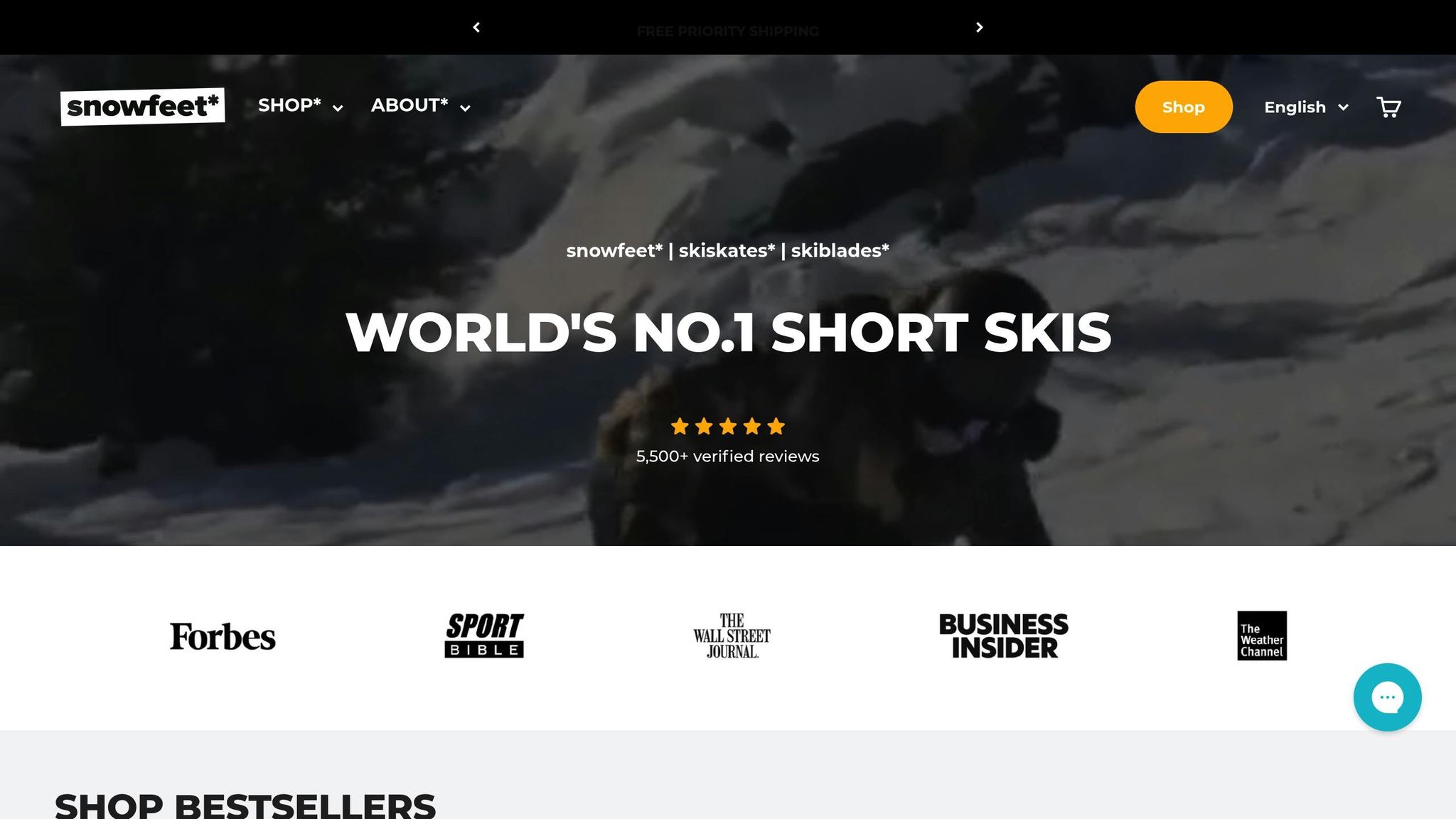
Les marques de ski traditionnelles comme Rossignol, Atomic, et Head privilégient des skis plus longs (160–180 cm ou plus) pour leur stabilité à haute vitesse. Ces skis sont fantastiques pour accrocher la neige dure et rester stable quand vous dévalez les pistes. Mais voici le hic : ils sont lourds, nécessitent des chaussures spécialisées, et demandent plus d'effort pour les contrôler.
Voici Snowfeet*. Leurs skis courts, allant de seulement 38 cm (Mini Ski Skates) à 120 cm (Short Skis), changent la donne. Ces skis compacts sont plus légers, plus faciles à manier, et apportent une ambiance ludique et accessible au ski.
"Les skis longs sont pour la plupart des skieurs trop encombrants et lourds. Dans un snowpark ou sur une piste, vous vous amuserez plus avec des skis courts, faciles à contrôler et agréables à glisser."
Avec les skis longs traditionnels, vous avez souvent affaire à un équipement encombrant qui nécessite un montage professionnel et beaucoup d'espace de rangement. Snowfeet*, en revanche, simplifie les choses. Leurs Short Skis fonctionnent avec des chaussures d'hiver ou de snowboard ordinaires et sont si portables qu'ils peuvent tenir dans un sac à dos.
Pourquoi les Short Skis gagnent en popularité
Les skis courts résolvent de nombreux problèmes liés aux skis longs. Ils sont adaptés aux débutants, indulgents, et parfaits pour les espaces restreints comme les bosses ou les snowparks où les virages rapides et les changements de direction rapides sont essentiels.
Ils facilitent aussi l'apprentissage. Alors que les skis longs traditionnels peuvent prendre des semaines aux débutants pour maîtriser les virages de base, les skis courts permettent à beaucoup de skieurs de passer du niveau débutant à intermédiaire en une seule journée. Cette courbe d'apprentissage rapide les rend particulièrement attrayants pour les skieurs freestyle et de park qui recherchent des descentes dynamiques et rapides.
Un autre grand avantage ? Les skis courts sont incroyablement pratiques. Ils sont faciles à emballer, à transporter, et ne vous fatiguent pas aussi vite, vous permettant ainsi de profiter de plus de descentes sans vous épuiser. De plus, ils vous évitent les tracas des chaussures de ski spécialisées. Avec Snowfeet*, vous pouvez utiliser vos chaussures d'hiver habituelles, ce qui ouvre le ski à plus de personnes et le rend plus amusant pour les pratiquants occasionnels.
"Pour le ski récréatif, les skis courts sont supérieurs."
Ces caractéristiques montrent pourquoi Snowfeet* révolutionne le ski all-mountain et rend ce sport plus accessible et agréable pour tous.
Ce qu'il faut rechercher lors de l'achat de skis all-mountain
Taille, largeur et poids des skis
La taille, la largeur et le poids des skis jouent un rôle énorme dans leurs performances. La plupart des marques de ski traditionnelles, comme Rossignol et Atomic, suggèrent des skis qui, une fois debout, atteignent quelque part entre votre menton et votre nez. Par exemple, si vous mesurez 5'6", un ski de 155 cm est souvent un bon choix pour les débutants, tandis que les skieurs avancés pourraient préférer quelque chose de plus proche de 175 cm.
Snowfeet* adopte une approche complètement différente. Leurs skis sont beaucoup plus courts - comme leurs Short Skis, qui mesurent seulement 120 cm (environ 47 pouces), ou les Mini Ski Skates, qui ne mesurent que 38 cm (15 pouces).
La largeur est un autre facteur crucial, surtout sous le pied, car elle influence à la fois l'agilité et la flottaison. Si vous passez la plupart de votre temps sur des pistes damées, évitez les skis de plus de 100 mm de large. Mais si vous partez en hors-piste, un ski de plus de 95 mm peut vous offrir une meilleure flottaison dans la neige profonde. Les skis plus étroits excellent dans les transitions rapides d'arête à arête, parfaits pour une sensation sportive et réactive. À l'inverse, les skis plus larges sont idéaux pour des conditions de neige molle, fondue ou POWDER.
Le poids compte aussi, surtout si vous transportez votre équipement ou skiez toute la journée. Les skis traditionnels peuvent être lourds et nécessitent des chaussures spécialisées. Les produits Snowfeet*, en revanche, sont légers et compatibles avec vos chaussures d'hiver habituelles, ce qui en fait une option plus pratique.
Réfléchissez maintenant à la façon dont votre niveau et le terrain que vous préférez influenceront votre choix de skis.
Adapter les skis à votre niveau et au terrain
La rigidité d'un ski doit correspondre à votre expérience. Les débutants trouveront les skis plus souples plus indulgents - comme les Mini Ski Skates ($150) ou PRO ($199) de Snowfeet*. Les skieurs avancés, en revanche, préfèrent souvent des skis plus rigides pour un meilleur contrôle à haute vitesse. Pour les pistes damées, une largeur de taille de 70 à 90 mm est un bon choix, tandis que les amateurs de poudreuse devraient opter pour des skis avec une largeur de taille de 90 mm ou plus.
Prenez par exemple le modèle POWDER de Snowfeet. Avec ses 99 cm et un prix de départ à 490 $, il est conçu pour affronter la neige profonde tout en restant assez facile à maîtriser pour les skieurs intermédiaires.
Si vous aimez les bosses et terrains accidentés, cherchez des skis avec des spatules plus souples pour garder les pointes légères et flexibles, une queue robuste pour la stabilité, et une taille moyenne à fine pour des virages rapides et précis. Les Skiskates de Snowfeet (44 cm, à partir de 390 $) sont un excellent choix ici, car ils sont conçus pour exceller dans des conditions serrées et délicates où les skis plus longs peuvent sembler encombrants.
Prix et performance multi-terrain
Le prix et la polyvalence sont tout aussi importants que les dimensions et la maniabilité. Les skis traditionnels se situent généralement entre 400 $ et 1 000 $. Pour les débutants ou skieurs intermédiaires, Rossignol propose des modèles allant de 300 $ à 600 $, tandis que leurs options haut de gamme peuvent dépasser largement 1 500 $. De même, les skis Salomon commencent autour de 250 $ mais peuvent dépasser 1 200 $ pour les configurations avancées.
Snowfeet*, en revanche, offre une alternative plus économique. Leurs short skis et skates commencent à 150 $, avec des modèles avancés comme les Short Skis à 690 $. De plus, Snowfeet* élimine de nombreux coûts supplémentaires liés aux skis traditionnels - comme les chaussures spécialisées, le montage professionnel ou le stockage et transport supplémentaires. En outre, leurs modèles sont assez polyvalents pour s'adapter à une variété de terrains. Par exemple, les Skiblades (65 cm, à partir de 450 $) performent bien sur pistes damées, dans les snowparks, et même lors de journées de POWDER modérées. Cette combinaison d'accessibilité et d'adaptabilité fait de Snowfeet* un choix pratique pour les aventures de ski tout-terrain.
Comment choisir un pack complet de ski pour débutants, locataires, nouveaux skieurs et skieurs récréatifs
Snowfeet* vs. Long Skis : Comparaison côte à côte
En comparant les Snowfeet* short skis aux skis longs traditionnels, les différences en termes de portabilité, facilité d'utilisation et polyvalence ressortent clairement.
Tableau comparatif : Snowfeet* vs. Long Skis
| Caractéristique | Snowfeet* Short Skis | Skis longs traditionnels (Rossignol, Atomic, Head) |
|---|---|---|
| Longueur | 38–120 cm (15–47 in) | 165–175 cm (65–69 in) |
| Poids | Léger et facile à transporter | Plus lourd ; nécessite souvent des sacs à skis |
| Portabilité | Se range dans un sac à dos ou le coffre d'une voiture | Nécessite généralement des barres de toit ou un grand véhicule |
| Courbe d'apprentissage | Rapide - idéal pour les débutants | Plus raide - nécessite des cours et de la pratique |
| Maniabilité | Excellent pour les virages rapides | Plus d'effort nécessaire dans les espaces étroits |
| Stabilité à grande vitesse | Idéal pour des vitesses modérées | Supérieur à haute vitesse |
| Compatibilité des chaussures | Compatible avec des bottes d'hiver ordinaires | Nécessite des chaussures de ski spécialisées |
| Gamme de prix | ~150 $–690 $ | ~300 $–1 500 $+ |
| Performance sur terrain | Meilleur sur pistes damées et dans les snowparks | Excelle dans des conditions variées, y compris en POWDER profond |
| Rangement | Espace minimal requis | Nécessite un espace de rangement important |
Ce graphique est clair : Snowfeet* brille par sa portabilité et son agilité. Avec une longueur maximale de seulement 120 cm contre les 165–175 cm typiques des skis traditionnels, Snowfeet* offre des avantages pratiques pour les skieurs récréatifs.
Pourquoi Snowfeet* fonctionne mieux pour la plupart des skieurs
En examinant de plus près les caractéristiques, les skis courts Snowfeet* offrent des avantages concrets qui les distinguent. Les skis traditionnels sont encombrants, nécessitant des sacs à skis ou des barres de toit pour le transport. Snowfeet*, en revanche, peut être rangé dans un sac à dos ordinaire ou le coffre de votre voiture - sans tracas supplémentaires.
Snowfeet* simplifie également le processus d'apprentissage.
"Les skis plus courts sont généralement plus faciles pour les débutants car ils sont plus faciles à contrôler et à tourner."
- Snowfeetstore.com
Cette facilité d'utilisation permet aux débutants de gagner rapidement en confiance, évitant ainsi le besoin de leçons coûteuses souvent associées aux skis longs traditionnels.
Sur les pistes, Snowfeet* excelle grâce à son design réactif et agile, rendant les virages rapides et les manœuvres serrées faciles - particulièrement utile dans les stations bondées. Ils s'épanouissent sur les pistes damées et dans les snowparks, où leur agilité offre une expérience de glisse amusante et dynamique.
Le coût est un autre domaine où Snowfeet* a l'avantage. Les skis traditionnels ont souvent un prix élevé et des dépenses supplémentaires comme des chaussures et fixations spécialisées. Snowfeet* élimine ces extras en fonctionnant avec des chaussures d'hiver classiques, ce qui réduit le coût global.
Pour la plupart des skieurs récréatifs, Snowfeet* est un choix parfait. Bien que les skis longs dominent en POWDER profond ou à grande vitesse, la majorité des skieurs aux États-Unis restent sur des pistes damées et dans les snowparks, où Snowfeet* brille vraiment.
"Pour le ski récréatif, les skis courts sont un meilleur choix. Ils sont plus faciles à emballer et à transporter, vous pouvez choisir le type de chaussure que vous préférez et enfin, ils sont faciles à manier, donc vous ne finirez pas complètement épuisé."
- Équipe Snowfeet
En résumé, Snowfeet* allie commodité et performance d'une manière qui répond aux besoins du skieur récréatif d'aujourd'hui. Ils sont portables, adaptés aux débutants et parfaits pour la plupart des aventures sur piste.
sbb-itb-17ade95
Meilleurs modèles Snowfeet* pour le ski tout-terrain en 2025
Snowfeet* a conçu sept modèles adaptés à différents niveaux de compétence et conditions de neige. Des designs compacts adaptés aux débutants aux options plus longues conçues pour la POWDER, il y en a pour tous les goûts. Découvrons ce qui rend chaque modèle unique afin que vous puissiez trouver l'ajustement parfait pour vos aventures de ski.
Snowfeet Mini Ski Skates (38 cm) et Snowfeet PRO (50 cm)
Les Snowfeet Mini Ski Skates (38 cm) sont un point d'entrée fantastique pour les débutants. À partir de 211,00 $, ces skis compacts sont axés sur le contrôle et la maniabilité facile, parfaits pour apprendre les bases. Ils ont obtenu une solide note de 4,9/5 étoiles, loués pour leur tolérance et leur portabilité - ils tiennent même dans un sac à dos ! Compatibles avec les pointures 6–13 US (38–47 EU), ils sont parfaits pour des sorties décontractées, que ce soit à la station ou dans votre jardin.
"Je les ai utilisés à Big Bear CA et ils étaient super. Je suis débutant en ski et c'était plus confortable." – KB
Si vous cherchez à passer au niveau supérieur, le Snowfeet PRO (50 cm) offre une stabilité améliorée tout en restant agile. Proposé à 250,00 $, ce modèle ajoute 12 cm de longueur, améliorant les performances sur la POWDER et hors des sentiers battus. Avec plus de 2 200 avis, c'est un favori pour ceux qui veulent un peu plus d'équilibre et de contrôle. Les deux modèles disposent de fixations en plastique durables et fonctionnent avec des chaussures d'hiver classiques, ce qui en fait une alternative économique aux équipements de ski traditionnels.
Snowfeet Skiskates (44 cm) et Skiblades (65 cm et 99 cm)
Les Snowfeet Skiskates (44 cm) sont conçus pour la vitesse et la précision sur pistes damées. À partir de 547,00 $, ils disposent d'une construction en bois et nécessitent des chaussures de ski ou de snowboard pour des performances maximales. Avec une note parfaite de 5,0/5 étoiles, ce sont des incontournables pour les skieurs en station qui recherchent une glisse rapide et réactive.
"Ils sont géniaux ! Je suis snowboardeur et je n'étais pas sûr de ces produits, mais j'ai décidé de les essayer car mon premier amour est le roller. Ils sont super ! Je suis resté sur le bunny à Keystone et je me suis rapidement senti à l'aise avec." – Ally de Indy
Pour une expérience plus traditionnelle de ski court, découvrez les Skiblades, disponibles en deux longueurs : 65 cm (à partir de 631,00 $) et 99 cm (à partir de 687,00 $). Les deux modèles affichent une note parfaite de 5,0/5 étoiles. La version 65 cm est idéale pour les snowparks et le carving, tandis que le modèle 99 cm offre un équilibre entre agilité et stabilité, parfait pour les figures créatives et les sauts.
Snowfeet POWDER (99 cm) et Snowfeet Short Skis (120 cm)
Le Snowfeet POWDER (99 cm) est conçu pour ceux qui recherchent une neige plus profonde. Proposé à 687,00 $, ce modèle partage la même longueur que les Skiblades 99 cm mais est optimisé pour la flottaison et la stabilité dans la poudreuse. Il conserve toujours le virage rapide qui fait la renommée de Snowfeet*, ce qui en fait un excellent choix pour les skieurs aventureux.
Au sommet de la gamme, les Snowfeet Short Skis (120 cm) offrent une expérience de ski quasi traditionnelle avec l'avantage supplémentaire de la portabilité. À 967,00 $, ces skis s'adressent aux skieurs avancés qui veulent la stabilité et la vitesse des skis plus longs sans l'encombrement. Nécessitant des chaussures de ski, ils sont un choix solide pour ceux qui passent de marques comme Rossignol ou Atomic, offrant une performance familière avec un design plus léger et compact.
Caractéristiques clés de tous les modèles
- Certains modèles fonctionnent avec des chaussures d'hiver classiques, tandis que d'autres nécessitent des chaussures de ski ou de snowboard.
- Tous les modèles sont équipés de boucles métalliques et de systèmes à double sangle avant.
- Un fartage régulier est recommandé pour maintenir la performance et éviter l'accumulation de neige.
Que vous soyez débutant ou skieur expérimenté, Snowfeet* propose un modèle qui correspond à votre style et à vos besoins.
Comment choisir le bon modèle Snowfeet* pour vous
Choisir le bon modèle Snowfeet* ne doit pas être une source de stress. Avec des prix allant de 150 $ à 690 $, il y a un modèle pour chaque besoin, niveau de compétence et budget. L'astuce est d'associer votre morphologie, votre expérience et vos objectifs de ski à la bonne option.
Trouvez le modèle adapté à votre corps et à vos compétences
Votre taille, poids et expérience en ski jouent un rôle important dans le choix du modèle Snowfeet* idéal. Si vous êtes débutant, des skiboards plus courts et plus tolérants sont votre meilleure option. Les skieurs avancés, en revanche, préféreront peut-être des modèles plus longs et plus rigides qui équilibrent agilité et stabilité.
Pour ceux qui débutent ou cherchent une option économique, le Snowfeet Basic est proposé à 190 $. Il est conçu pour un usage occasionnel et bénéficie d'une note de 3,6 étoiles sur 77 avis Amazon. Un utilisateur, mesurant 1,88 m avec des pieds taille 12, a partagé qu'il n'avait eu aucun problème à dévaler les pistes, prouvant que ce modèle compact fonctionne bien même pour les skieurs plus grands.
Si vous êtes prêt à passer à la vitesse supérieure, le Snowfeet PRO à 250 $ offre une meilleure stabilité tout en restant facile à manier. Sa longueur supplémentaire par rapport aux Mini Ski Skates fait une différence notable, surtout pour les skieurs mesurant plus de 1,80 m ou pesant plus de 82 kg.
Pour les skieurs avancés, les modèles de skiblades plus longs (99 cm ou 120 cm) valent la peine d'être envisagés. Ils offrent une longueur suffisante pour les utilisateurs expérimentés tout en conservant l'agilité qui caractérise les Snowfeet*.
Ensuite, pensez à l'endroit où vous skierez et à l'équipement que vous utiliserez pour affiner encore votre choix.
Adaptez vos skis au terrain et à l'équipement
L'endroit où vous skiez et le type de chaussures que vous portez peuvent aider à affiner vos options. Les Snowfeet* sont assez polyvalents pour les randonnées, les pistes de ski de fond, les pistes de ski alpin, et fonctionnent avec la plupart des chaussures d'hiver. Cela rend des modèles comme le Basic, les Mini Ski Skates et le PRO parfaits pour les skieurs occasionnels.
Pour les pistes damées en station, les Skiskates sont un excellent choix. Ils sont plus rapides, construits avec un noyau en bois, et compatibles avec les chaussures de ski comme de snowboard. À partir de 390 $, ils sont conçus pour la précision et la vitesse sur les pistes entretenues.
Les Snowfeet* excellent sur la neige damée et peuvent gérer jusqu'à 10 cm de POWDER. Pour une neige plus profonde, les modèles plus longs sont préférables. Les skiblades plus courts (60–80 cm) sont parfaits pour les virages rapides et les figures, tandis que les plus longs (90–120 cm) brillent dans la POWDER et le carving.
Si vous utilisez des chaussures de snowboard, gardez à l'esprit que le Snowfeet Basic n'est pas le meilleur choix. Optez plutôt pour les Skiskates ou Skiblades, qui disposent de fixations réglables adaptées à différents types de chaussures dans une certaine gamme de tailles. Assortir vos chaussures au bon modèle vous fait non seulement économiser de l'argent, mais améliore aussi les performances.
Il est également important de noter que des chaussures de ski hautes et rigides sont recommandées pour un meilleur maintien de la cheville, surtout si vous affrontez des terrains plus difficiles ou skiez à des vitesses plus élevées.
Cette adaptabilité fait partie de ce qui rend les Snowfeet* si appréciés des skieurs recherchant une performance polyvalente.
Passer des skis longs aux Snowfeet*
Une fois que vous avez choisi un modèle adapté à votre corps et à votre niveau, il est temps de penser à la transition des skis longs traditionnels vers les Snowfeet*. Bien que ce changement nécessite quelques ajustements, la plupart des skieurs s'y habituent assez rapidement.
Commencez avec des modèles plus courts comme les Mini Ski Skates ou PRO pour gagner en confiance. Concentrez-vous sur le maintien de votre poids centré ou légèrement en arrière, car la longueur plus courte des Snowfeet* déplace votre centre de gravité par rapport aux skis longs, où vous auriez tendance à vous pencher en avant.
Essayez de skier sans bâtons pour améliorer votre équilibre. Cela vous oblige à vous appuyer sur votre tronc et vos jambes plutôt que sur le haut du corps. Les short skis sont parfaits pour des virages rapides et précis, alors profitez de leur agilité. Contrairement aux skis traditionnels de marques comme Atomic ou Head qui favorisent les grands virages, Snowfeet* excelle dans les changements de direction ludiques et rapides.
Si vous avez de l'expérience en patinage sur glace ou en roller, vous vous adapterez probablement plus vite, car les mouvements sont assez similaires.
Explorez différents terrains progressivement pour vous familiariser avec la polyvalence de Snowfeet*. Commencez par des pistes faciles et damées, puis progressez vers des pentes plus raides et des conditions de neige variées.
Un des avantages des short skis est qu'ils sont plus légers, ce qui les rend plus faciles à contrôler et moins fatigants à utiliser. Cela signifie que vous pouvez skier plus longtemps sans vous sentir épuisé. Cependant, ils sont moins stables à grande vitesse comparés aux skis longs, alors concentrez-vous sur le plaisir de leur maniabilité plutôt que de chercher la vitesse maximale.
Conclusion : Pourquoi Snowfeet* révolutionne le ski tout-terrain
Pendant des années, le monde du ski a cru que du matériel plus grand et plus lourd signifiait de meilleures performances. Mais Snowfeet* renverse cette idée. Avec des prix allant de 150 $ à 690 $, ce matériel prouve que des options plus petites, plus légères et plus portables peuvent complètement changer notre façon de penser le ski.
"Pensez à Snowfeet comme des skates pour la neige - ils sont légers, portables et faciles à fixer à vos chaussures d'hiver." – Équipe Snowfeet
Les skis traditionnels de marques comme Rossignol et Atomic mesurent généralement entre 150 et 180 cm et nécessitent une pile d'équipements spécialisés. Snowfeet*, en revanche, existe en longueurs allant de 38 cm à 120 cm. Ils sont assez compacts pour tenir dans un sac à dos classique et fonctionnent avec vos chaussures d'hiver habituelles. Ce n'est pas juste du matériel - c'est une toute nouvelle approche du ski.
La portabilité change tout ici. Oubliez la lutte avec des skis de 6 pieds dans les trains bondés, les avions ou les coffres de voiture minuscules. Le matériel Snowfeet* est si compact qu'il se range aussi facilement qu'un ordinateur portable. Cela signifie moins de tracas, moins de fatigue et beaucoup plus de liberté pour skier où vous voulez - des stations de montagne à votre propre jardin.
La courbe d'apprentissage ? Beaucoup plus facile. Le design plus court rend le matériel Snowfeet* simple à contrôler, ce qui est une excellente nouvelle pour les débutants. De plus, l'agilité accrue signifie moins de chutes et des progrès plus rapides pour les skieurs de tous niveaux.
FAQs
Qu'est-ce qui différencie les Snowfeet short skis des skis longs traditionnels en termes de performance et de facilité d'utilisation ?
Les Snowfeet short skis sont synonymes de rapidité et simplicité. Leur conception compacte les rend faciles à manier, surtout pour naviguer dans des espaces étroits, filer à travers les snowparks ou effectuer des virages serrés. De plus, ils sont super portables, ce qui est un grand avantage pour les débutants et les skieurs occasionnels à la recherche d'une option légère et sans tracas par rapport au matériel traditionnel encombrant.
D'un autre côté, les skis longs excellent en matière de stabilité et de vitesse. Ils sont parfaits pour trancher la neige profonde ou carver à grande vitesse, ce qui en fait le choix des skieurs expérimentés en quête de performance. Mais si vous cherchez quelque chose qui mise davantage sur le contrôle, la flexibilité et le simple plaisir, les short skis Snowfeet offrent une expérience fraîche et décontractée qui convient à tous les niveaux.
Quel modèle Snowfeet est le mieux adapté à mon niveau de ski et à mon terrain préféré ?
Choisir le bon modèle Snowfeet dépend de votre niveau et du type de terrain que vous aimez explorer. Si vous êtes un skieur débutant ou intermédiaire, vous apprécierez les modèles plus courts (15–47 pouces). Ils sont très faciles à contrôler et parfaits pour des virages fluides et des manœuvres rapides. Ils sont idéaux si vous débutez ou souhaitez une glisse détendue sur des pistes damées ou même en milieu urbain.
Pour ceux qui recherchent un peu plus d'aventure, les modèles Snowfeet plus longs sont la solution. Ils offrent plus de stabilité et gèrent mieux la POWDER, vous donnant une sensation plus proche du ski traditionnel.
Contrairement aux skis plus volumineux de marques comme Rossignol ou Atomic, Snowfeet sont légers et compacts. Cela les rend faciles à transporter, que vous alliez aux pistes ou simplement au parc local. Ils représentent une option amusante et polyvalente pour les skieurs qui veulent quelque chose de nouveau et excitant sans sacrifier le contrôle ou la performance.
Pourquoi les short skis comme Snowfeet deviennent-ils un choix privilégié des skieurs récréatifs face aux skis longs traditionnels ?
Les short skis, comme les Snowfeet, gagnent rapidement en popularité parmi les skieurs récréatifs - et c'est facile à comprendre. Leur petite taille les rend super pratiques à porter, ranger et transporter. Pour tous ceux qui en ont assez de trimballer du matériel encombrant, c'est une révolution. De plus, ils sont légers, ce qui signifie moins de fatigue et plus d'énergie pour profiter de votre temps sur les pistes. Que vous soyez débutant ou skieur expérimenté, ils rendent l'expérience plus amusante et moins épuisante.
En matière de performance, les short skis brillent par leur incroyable maniabilité et leur contrôle rapide des carres. Cela les rend parfaits pour carver des virages serrés ou gérer facilement les plaques de glace. Contrairement aux skis longs traditionnels, qui misent tout sur la vitesse et la stabilité, Snowfeet privilégie le plaisir et l'accessibilité. Ils conviennent à tous les niveaux de skieurs, aidant chacun à se sentir confiant et maître de sa glisse. Que vous dévaliez des pistes damées, expérimentiez des terrains variés ou cherchiez simplement une descente détendue et ludique, les short skis Snowfeet apportent un tout nouveau niveau de plaisir à votre journée en montagne.







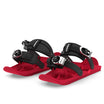
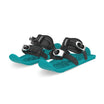












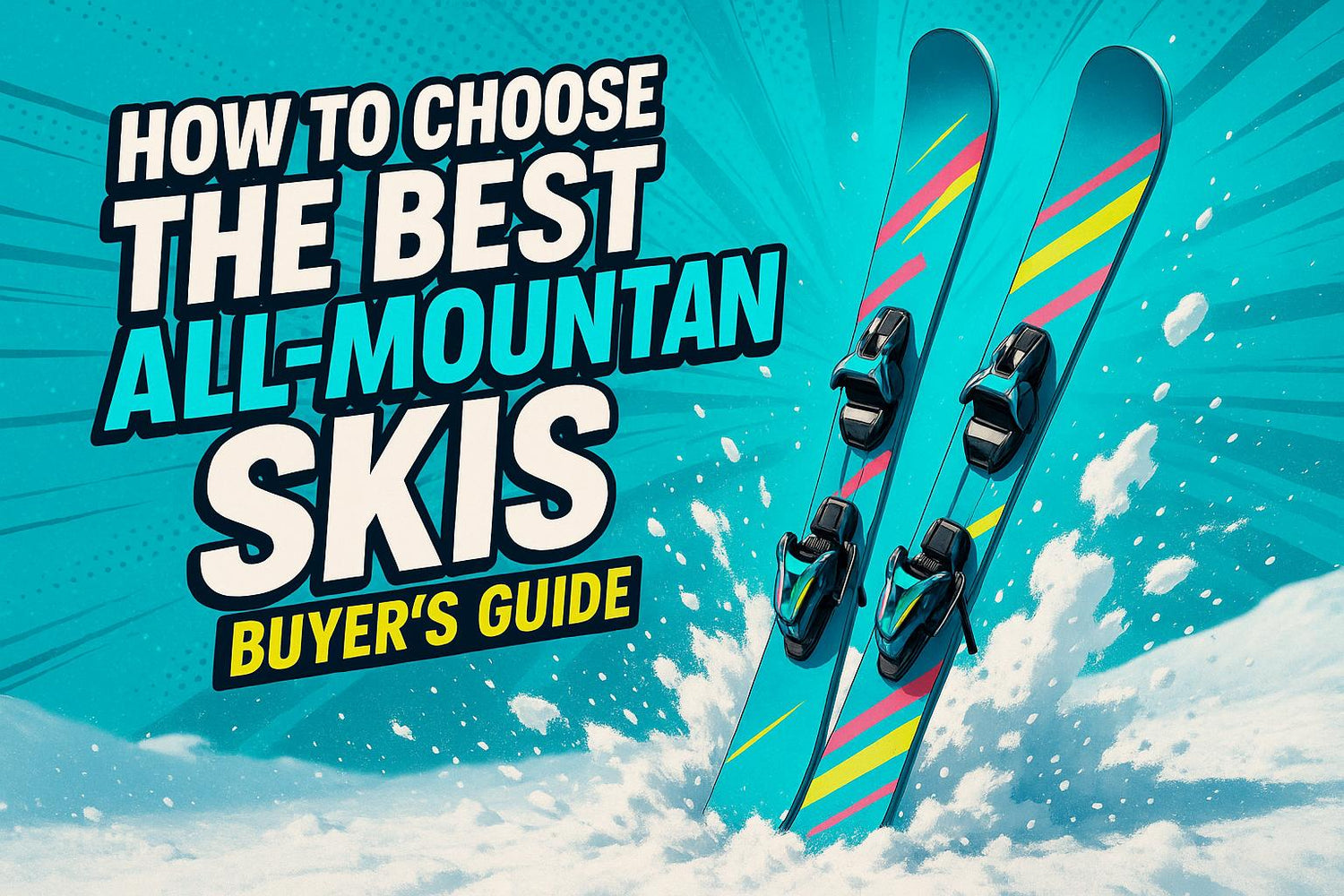
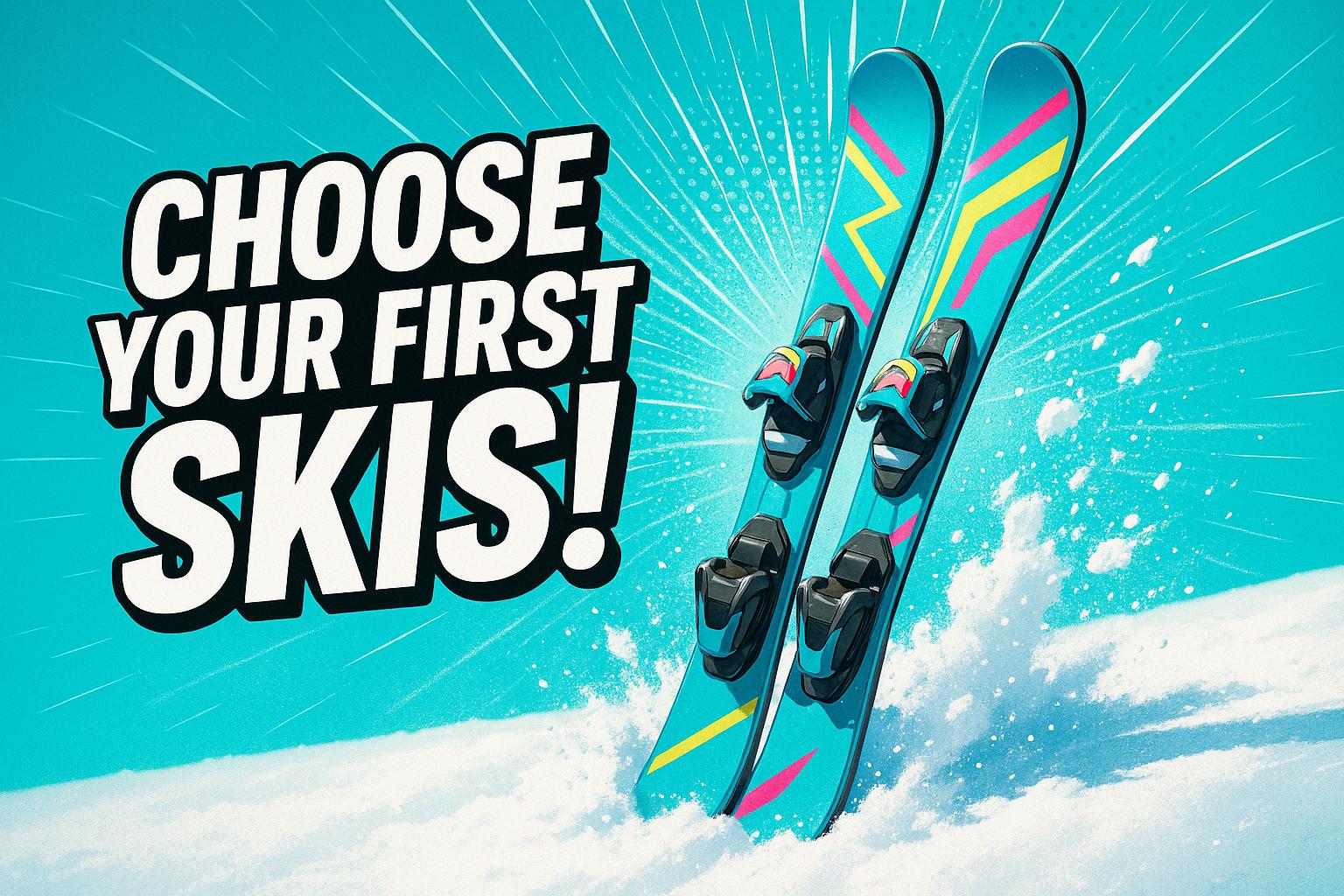
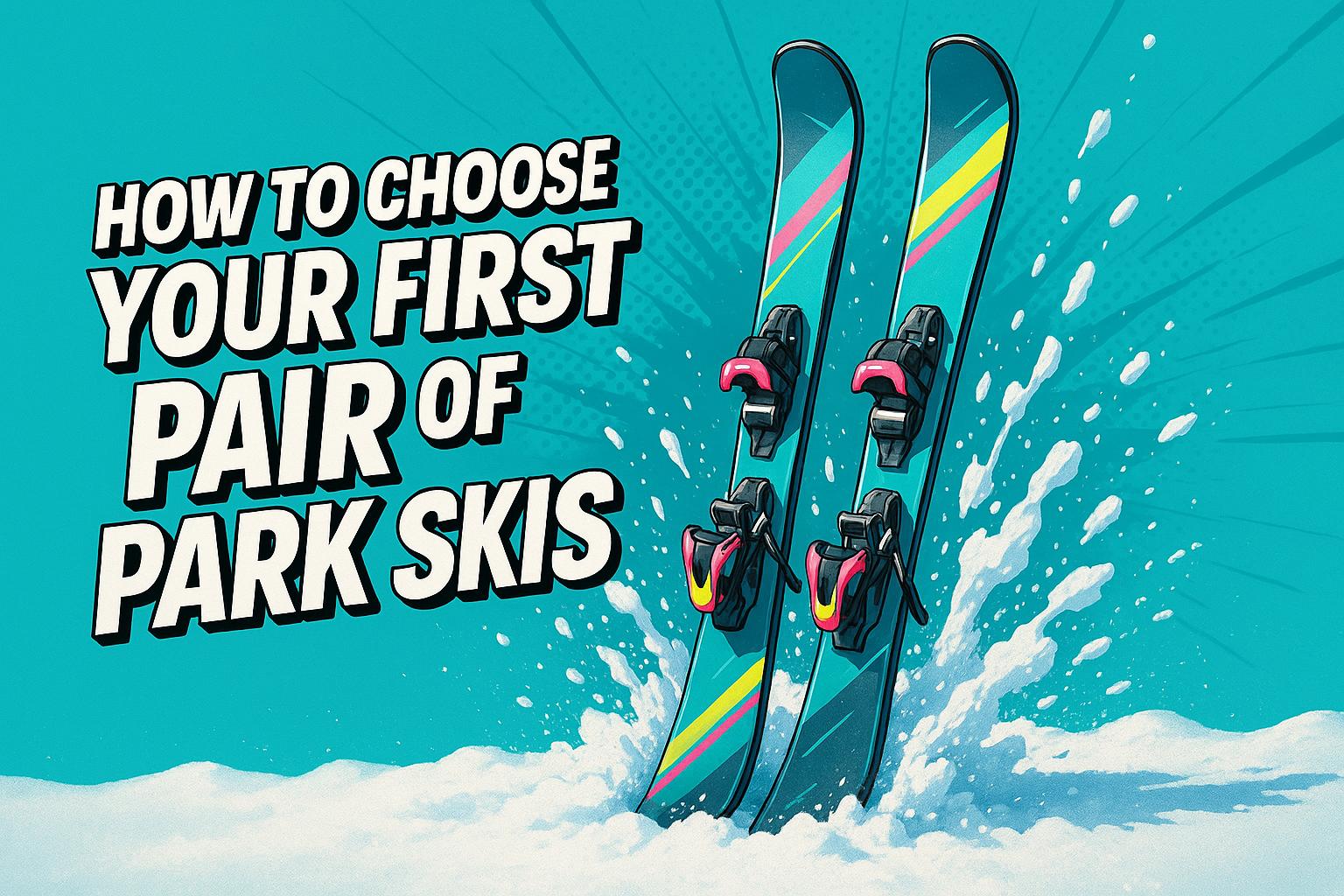




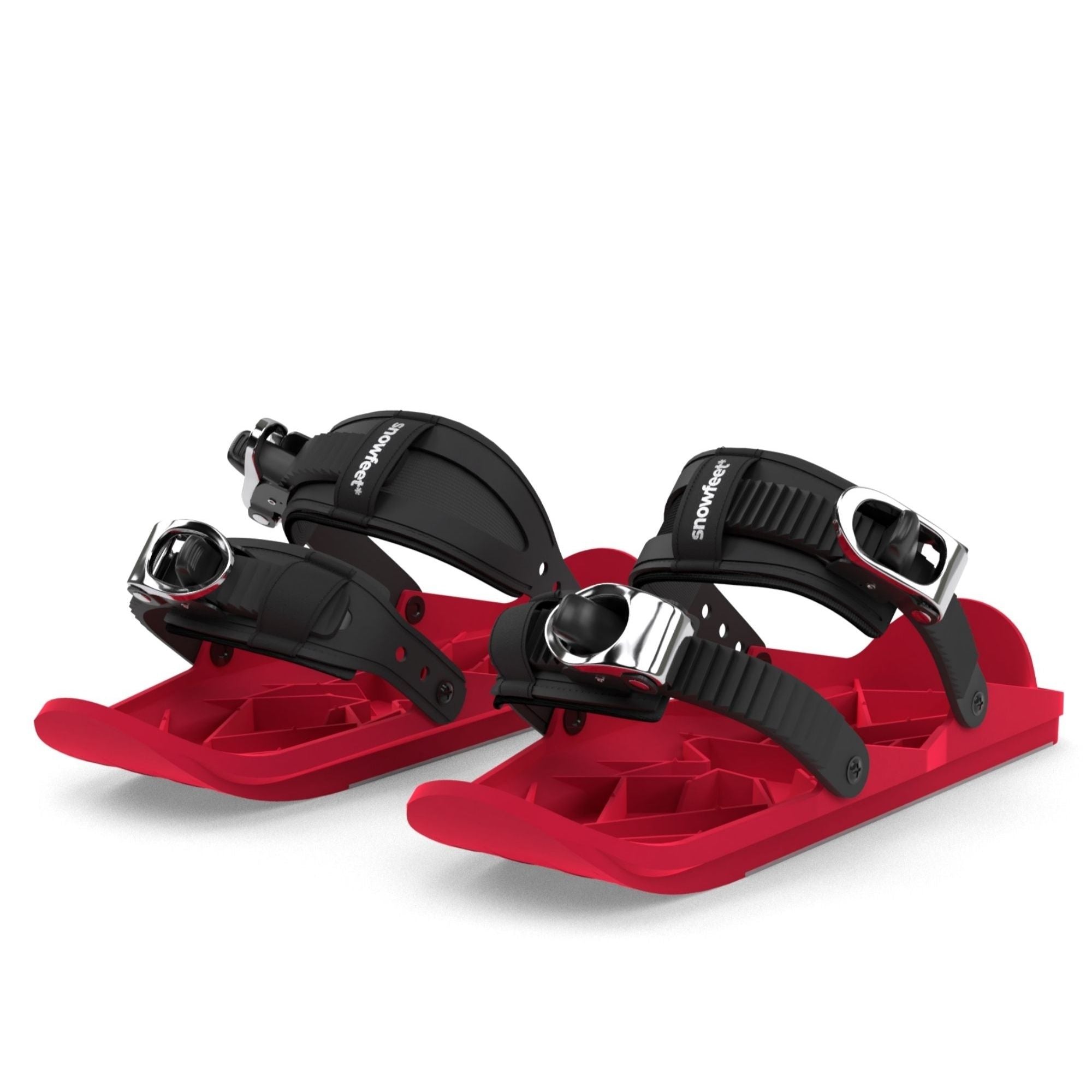
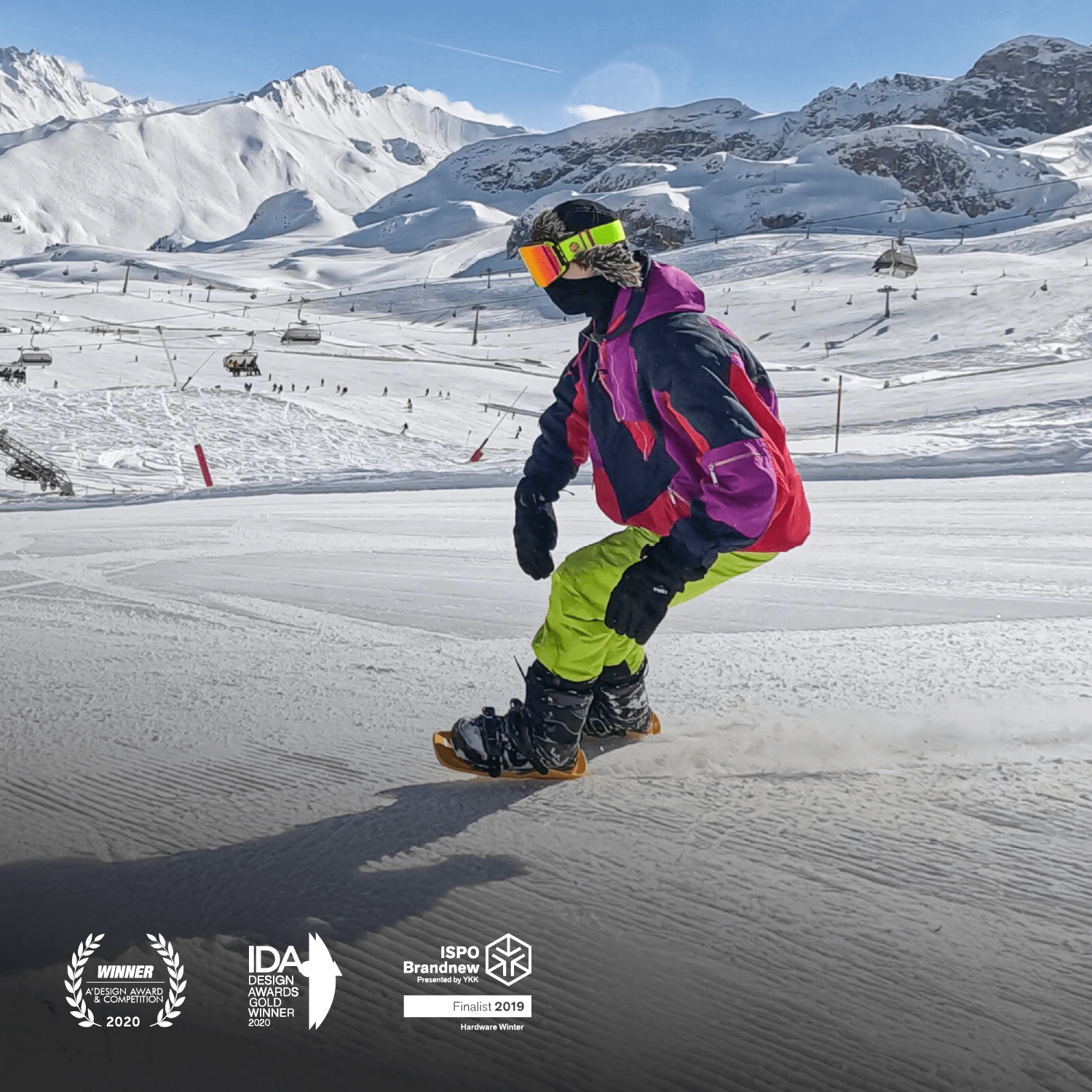




Laisser un commentaire
Ce site est protégé par hCaptcha, et la Politique de confidentialité et les Conditions de service de hCaptcha s’appliquent.